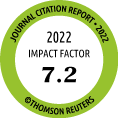Return to content in this issue
Molecular Allergy Diagnosis in Clinical Practice: Frequently Asked Questions
Luengo O1-4, Labrador-Horrillo M1-4
1Allergy Section, Internal Medicine Department, Hospital Universitari Vall d’Hebron, Barcelona, Spain
2Vall d’Hebron Institut de Recerca (VHIR), Barcelona, Spain
3Universitat Autònoma de Barcelona (UAB), Barcelona, Spain
4ARADyAL Research Network, Instituto de Salud Carlos III (ISCIII), Madrid, Spain
J Investig Allergol Clin Immunol 2022; Vol 32(1)
: 1-12
doi: 10.18176/jiaci.0769
Considerable progress has been made in the field of molecular biology in recent years, enabling the study of sensitization to the individual components of an allergenic source, a practice that has been termed molecular allergy diagnosis (MD) or component-resolved diagnosis (CRD).
The present review provides the clinician with a practical approach to the use of MD by answering questions frequently asked by physicians on how MD can help improve the diagnosis of allergy in daily clinical practice.
The article is divided into 3 sections. First, we provide a brief review of the importance for the clinician of knowing the main allergens in the different allergenic sources, their structure, and their in vitro cross-reactivity before approaching MD (section A). Second, we review the usefulness of MD in clinical practice (section B) and answer frequently asked questions on the subject. Finally, section C addresses the interpretation of MD and its integration with other tools available for the diagnosis of allergy.
Key words: Molecular allergy diagnosis (MD), Component-resolved diagnosis (CRD), Allergen component, Genuine sensitization, Cross-reactivity



